HISTORY OF PASCO COUNTYSalt SpringsThis page was last revised on Nov. 30, 2020. An operation producing salt for the Confederacy during the Civil War existed near what is now Port Richey. The salt works was owned by Rev. Capt. Leroy G. Lesley, David Hope, and a man named Ryals. Frances Clark Mallett recalls that David, Henry, and William Hope were each given land grants of 160 acres at Chocochattee. “After establishing their homesteads, they started building cattle herds. There were no fences to keep in the cattle, so the cattle were branded and roamed free. The cattle wandered down to a salt spring near the coast where they could get to the salt licks on the edge of the spring. After several attempts to round up their cattle to take them back to their homesteads the Hope brothers gave up and established a camp near the springs. Soon they realized the high salt content of the spring water, so they began boiling down the water to make salt.” An advertisement which appeared in the Cotton States newspaper of Gainesville on March 19, 1864, reads:
An advertisement which appeared in the Cotton States newspaper of Gainesville on April 16, 1864, reads:
This area later became known as Hopeville and Port Richey. An 1859 map shows a settlement named Pittitochoscolee at this location. In the 1880s, plans were being made to develop Salt Springs. The planners mapped out a town to be called Tremont, but the project fell through. Julia Howell Dowling (1878-1970), who grew up in Blanton, recalled: “I made the trip to the Coast each fall with my father. We camped North of New Port Richey at a salt spring. There was a large kettle set up and folks from all around came to cook-off salt. That’s how we got our year’s supply of salt. Mullet (fish) was also acquired and salted in a barrel to give us a winter supply of mullet.” (From the booklet Stories Told by Julia.) In 1927 a newspaper article reported that Salt Springs “is part of the property of the Maner Company, who began dredging for an extensive Venetian development about two years ago and while little has been accomplished their plans have not been abandoned. Salt Springs is well known to many who have traveled over sand trails before our good roads were built, to camp and fish, and was a favorite place for an oyster bake.” The land surrounding the salt springs was acquired by the State of Florida and Werner-Boyce Salt Springs State Park was dedicated on March 16, 2001. The web site of the state park is here. A historical marker was scheduled to be dedicated in 2008. 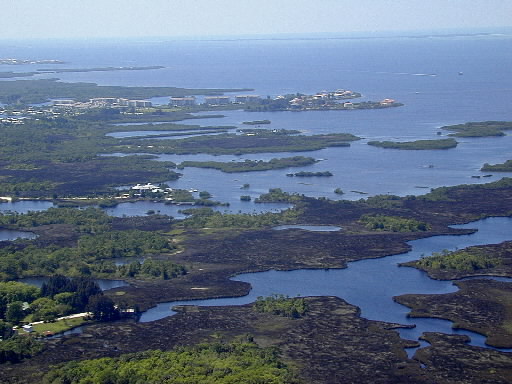 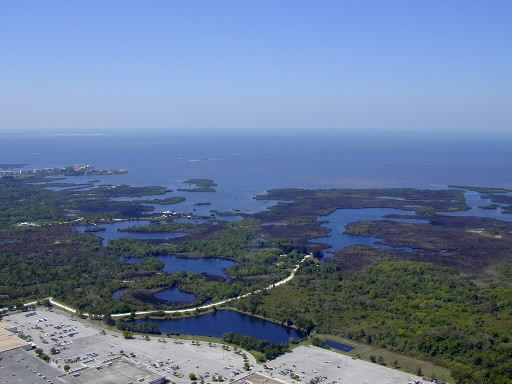 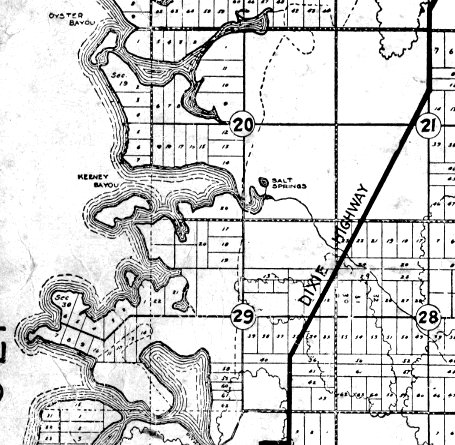 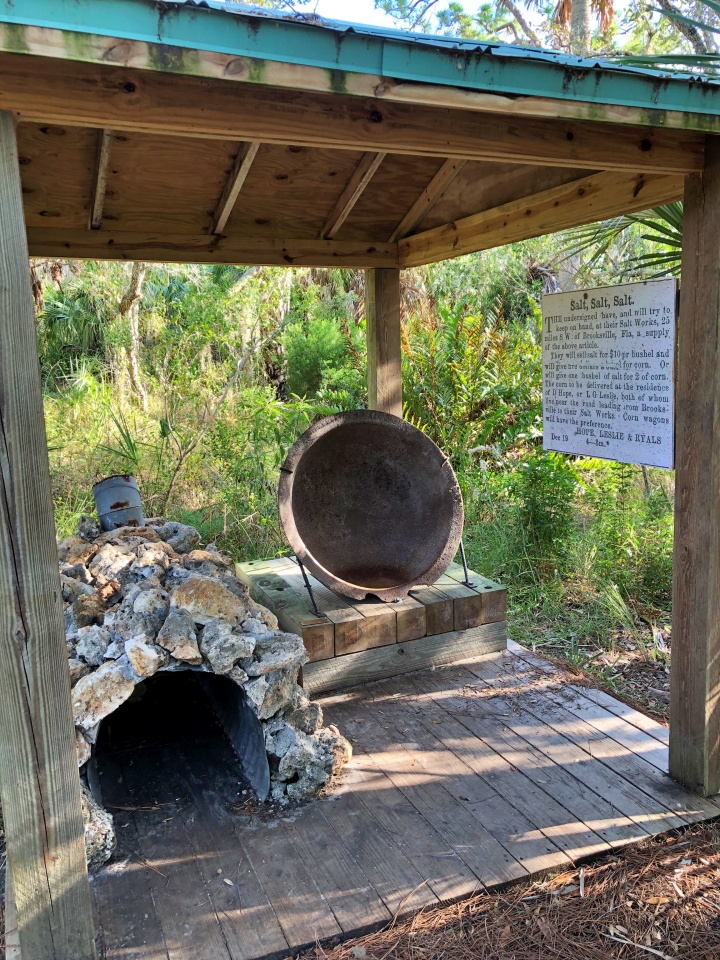 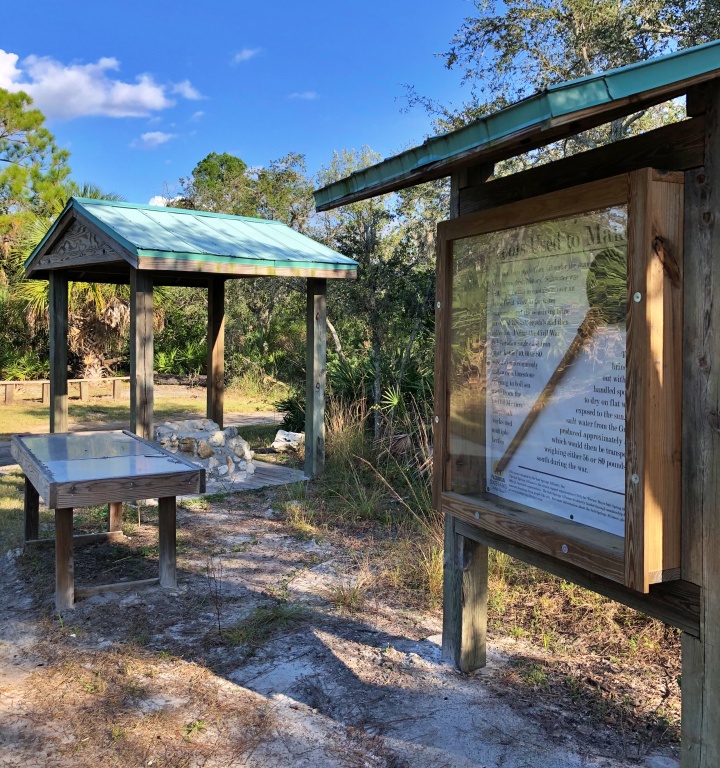 Salt Springs Civil War RaidBy JEFF CANNON The area described in these military reports is the Salt Springs area and we know Lesley, who was part owner of the salt works, also was Capt. of the home guard. It seems likely the smoke they discovered on the morning of July 8th 1864 was coming from an encampment at or near Salt Springs — the key being Lesley being involved with the salt works and home guard that engaged the Union troops. On July 7, 1864, Union Troops would land at Anclote Island and eventually take control of the area. Arriving at 8 p.m. on July 7, 1864, Union Schooners Seabird and Ariel, along with the sloop Rosalie, landed at Anclote where they cast anchor until the next morning. After disembarking the soldiers, the next morning, of the Seabird, Ariel and Rosalie proceeded to Bayport, and anchored offshore awaiting the arrival of Union Troops that had disembarked from Anclote. On July 8, the 2nd Florida Cavalry and the 2nd U.S. Colored Troops consisting of 240 men, met their consorts who would take them to the mainland at the mouth of the Anclote River. While aboard these much smaller vessels bound for the mainland, conditions were cramped and the men had to lie across and pile atop of each other the entire trip from Anclote Island. Taking most of the day, these smaller vessels reached the mainland at about 3 o’clock in the afternoon. Under the command of Capt. J. W. Childs the Union Troops had been given their orders and they began marching at once to overtake the Confederate controlled Brooksville. Marching until 8 o’clock, the Union Troops eventually stopped and set camp for the night approximately 3 miles north of the Anclote River and camping in area that is now Pasco County. On the morning of July 8, 1863, these troops would awake at their encampment, approximately 3 miles north of the Anclote River, to discover the smoke from fires in front of them. It is believed that the smoke discovered by Union Troops on the morning of July 8, was rising from the area near to Salt Springs and the former salt-works of Hope and Lesley. The salt-works, no longer in operation, was likely being used as an encampment for the Confederate home-guards who were on daily patrol duty throughout the area. An Advance Guard of 10 Union men was assigned to go ahead of the Union company and advance upon the encampment of Confederate soldiers. Upon approaching and charging the Confederate camp an immediate skirmish ensued. The Confederates, totaling about 18, fell back resulting in the imprisonment of 4 men, 8 horses, several small arms, breakfast and numerous other items not noted. Among the Confederates captured during the skirmish was Christopher Freibles and Edward Clarke, both son-in-laws to Hernando County Probate Judge Perry G. Wall and neighbors to David Hope and Leroy Leslie. After taking their prisoners, the Federal Troops resumed their march towards Brooksville. Located in the area of Salt Springs and the former salt-works, this company of Federal Troops would soon begin their march along the road leading from the salt-works on the coast straight into interior Brooksville and the homes of the residents. It was soon discovered that the Mounted Rebels [Confederates] were ahead of them, this encounter would result in a two day skirmish between the two sides. With the skirmishes continuing, on July 9th, after breakfast the Federal Troops took up their line of march toward Brooksville, however they didn’t get far before receiving a series of shots from the Confederates. With the Federal Commander placing his best marksmen at the front, the Confederates soon pulled back but continued to skirmish throughout the day while the troops advanced on Brooksville. To the surprise of everyone, towards that evening of July 9th, the Federal Troops would encounter a meeting with the Confederates that they had been skirmishing with since landing at Anclote days prior. Under a white flag of truce Capt of the Rebels, Capt. Leroy Lesley, daringly approached the Federal encampment that was located near the present Pasco/ Hernando County line along the road to the salt-works. During this meeting Capt. Leroy Lesley tried to convince officers Capt. Green and Capt. McCullough to desert the Union cause and move back to the side of Dixie. Captains Green and McCullough told Lesley that they would not listen to anything of that kind and immediately broke the conference dismissing Lesley under his flag of truce. This was Lesley’s and the home-guards’ last attempt in keeping the Federal Troops from raiding their plantations and destroying Brooksville. Upon dismissing Lesley, the Federal Troops immediately took up their line of march toward Brooksville. By the nightfall on July 9th Federal Troops had reached the plantation of David Hope situated along the southern end of the Annutteligua Hammock, some 30 miles from where they landed at Anclote. Here, at the plantation of David Hope, the Union soldiers raided the plantation taking chickens, ducks, geese, a quantity of yams, mutton corn, a barrel of bacon and a cache of syrup; these soldiers spared nothing in their raid. Once finished with their pillaging the Union Soldiers proceeded to burn the fence, crops, wagons, wagon houses, and corn cribs completely destroying Hope’s plantation for being a known Rebel guerrilla. From Hope’s plantation the Union Troops took up their line of march for Brooksville finding the home and plantation of Capt. Lesley’s and short distance from Hope’s plantation. Lesley’s wife had met them with a flag of truce begging that their home be spared, at direction of Capt. Bartholf thought it was best to spare the home but allowed the colored troops to pillage taking anything they wanted from the home. Upon approaching Lesley’s home, where his family was still residing, the Union Troops were met with brush fire from the Confederates before their main body of troops joined them. The Union troops commenced sacking the corn cribs and corn wagons taking all that could be used for their efforts. When done they set fire to Lesley’s wagon houses and corn cribs sparing his home for the family that they left with it. After leaving Lesley’s plantation the Union troops proceeded towards Brooksville destroying the plantations of Frierson, Ellis, Youngblood and any others they encountered along the way. About 1 mile before reaching Brooksville the Union Troops received orders to turn their march towards Bayport and many of the men were upset having prepared to burn the town of Brooksville. They stopped their march about 2 miles outside Bayport and encamped for the night. Over the next couple of days the Union Troops would advance on Bayport where they would meet the Schooners Seabird and Ariel along with the sloop Rosalie, the same boats that had dropped them at Anclote a week or so prior. The road leading from Brooksville to Salt Springs would play a crucial role in the Brooksville Raid, allowing the Union troops access to the interior. Salt Was Florida’s Big Contribution to Confederate Cause in Civil WarBy WILFRED T. NEILL This article appeared in the St. Petersburg Times on Aug. 7, 1977. The production of salt was one of Florida’s major contributions to the Confederate cause during the Civil War. I’ve mentioned this subject in a previous article, but now I’d like to take it up in a bit more detail. Florida was in an awkward position at the outbreak of the Civil War. In those days, just as at present, many residents had recently come down from the North. Their basic loyalty was still to the Union. There were also quite a few settlers of British, Spanish, Cuban, Greek or Minorcan descent; they just wanted to stay out of the war and keep on with their work. Furthermore, some important Floridians—Thomas Brown, Columbus Drew, George T. Ward, even former territorial governor Richard Keith Call—were Union sympathizers. Of course, a majority of Florida pioneers would be loyal to the South. But their numbers re not great, for the state was very thinly populated at that time. As an example, there were only two to six inhabitants per square mile in an area extending from Tampa Bay northeastward about to present-day Land O’ Lakes, Zephyrhills and Plant City. Most of Pasco County, along with Pinellas, Hernando and Citrus counties, had fewer than two inhabitants per square mile. The area of thickest population extended from St. Marks and Tallahassee northward to the Georgia boarder, and even there the settlers numbered no more than 45 per square mile. Florida seceded from the Union on Jan. 11, 1861. It remained an “independent nation” until Jan. 28, when it joined the Confederacy. At that time it was already obvious that the state’s greatest contribution to the war effort would be supplies rather than manpower. Florida would support the South by producing cotton, tobacco, turpentine, beef, pork, tallow, hides, cane sugar and syrup, corn, dried fish. And salt—especially salt. Salt was needed not only for ordinary table use, but also (and more importantly) to cure the beef and pork that would be fed to southern troops. For during those days, in the absence of refrigeration, food somehow had to be preserved for days or even weeks. Salt curing was the most effective way to do this. Salt was so important that the men who made it were exempted from military service. Accordingly, all along the gulf coast from Tampa Bay to the Choctawhatchee, Floridians began to build saltwork. Because the salt was extracted from seawater, the works had to be set up at the seashore. And these works were usually located near a river mouth because the salt would be transported by blockade-running ships. Soon there were saltworks near the Wacasassa, Crystal River, the Homosassa, the Chassahowitzka; also near Tampa and at the tip of the Pinellas peninsula. One of the most interesting works was built at Salt Springs, just northwest of Port Richey in Pasco County. There, at each high tide, large saltwater springs gushed from the ground. And this location was important, for coastal saltworks often were bombarded by Union sailors and marines, who would go ashore, burn the storehouses and shanties, break up the equipment and capture or kill the livestock. But Salt Springs, being well inland, could not be seen from Union boats patrolling offshore. And so 200 men lived and worked there, extracting salt from the sea-water that welled up to the surface. (This was 22 years before Aaron McLaughlin Richey arrived to found Port Richey near the mouth of the Cotee River.) At a saltworks, the men boiled sea water in large kettles and sheet-iron boilers or else merely allowed the water to evaporate in the hot sun. Sometimes the men would erect small windmills, to pump the water through hollow logs into the iron boilers or the wooden evaporating vats. A hard rain could ruin a day’s work by diluting the water or dissolving the salt in the vats. Consequently, rolling roof-like structures were built and were hastily pulled into place when storm clouds threatened. A large works might turn out 1,500 bushels of salt a day. For this the Confederate government paid $12.50 a bushel. But first, of course, the salt-makers had to get their product to some major southern port. And this was not easy. And so it was that the saltmakers did their share—indeed, more than their share—toward supporting the southern cause. |
